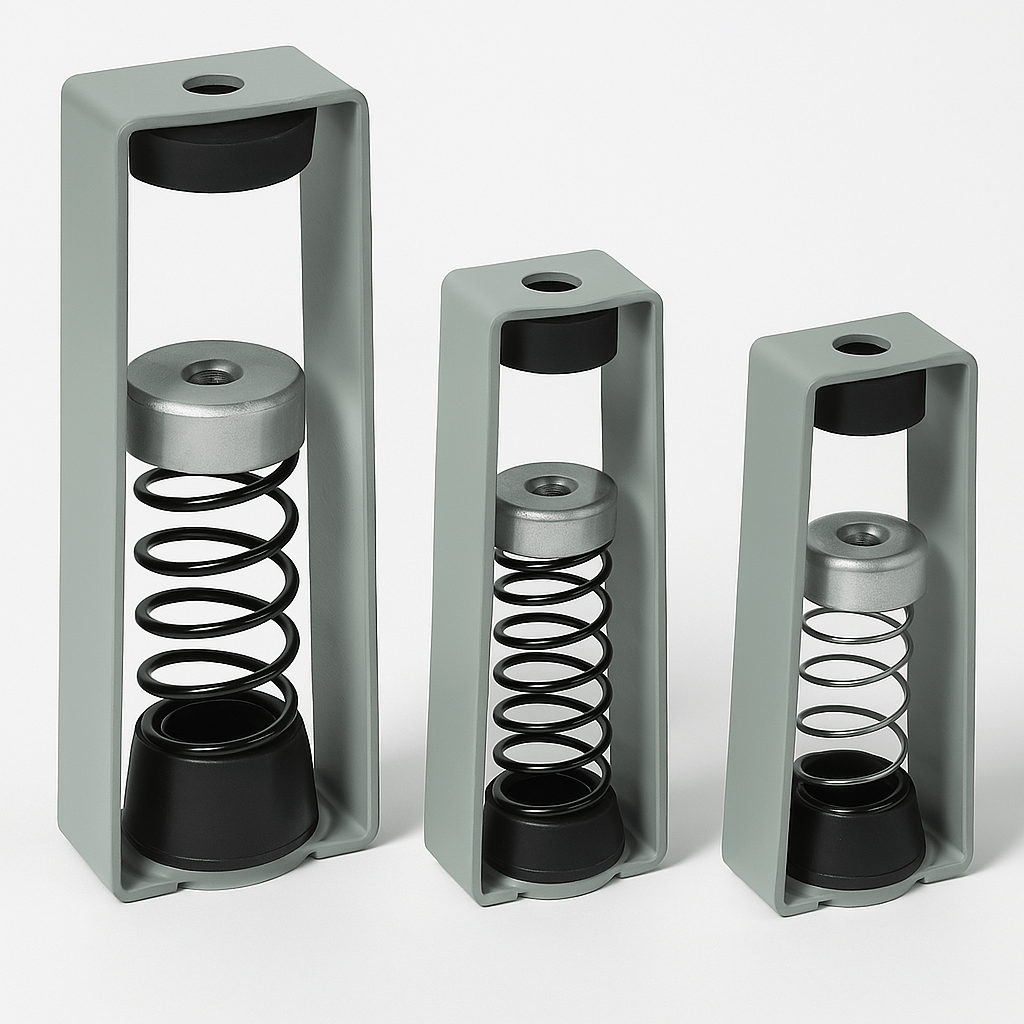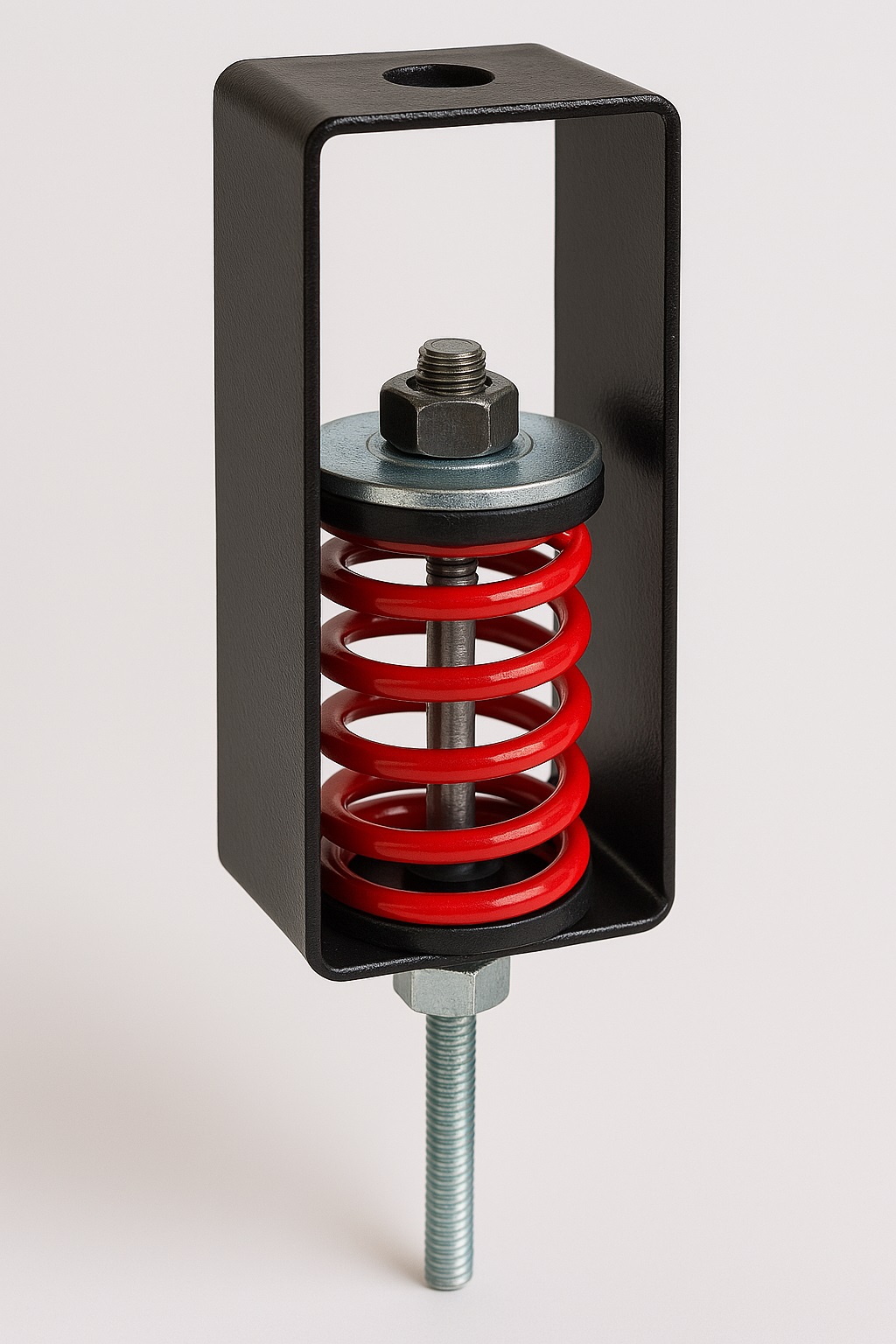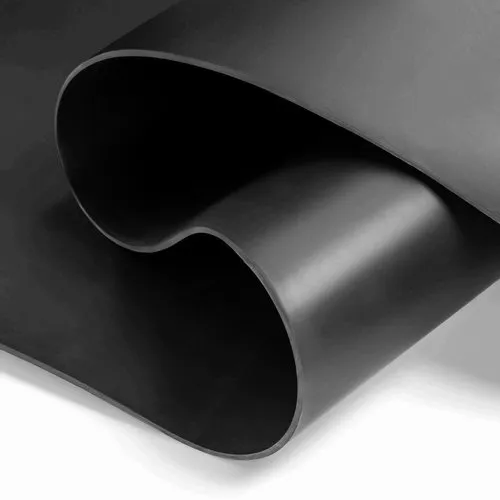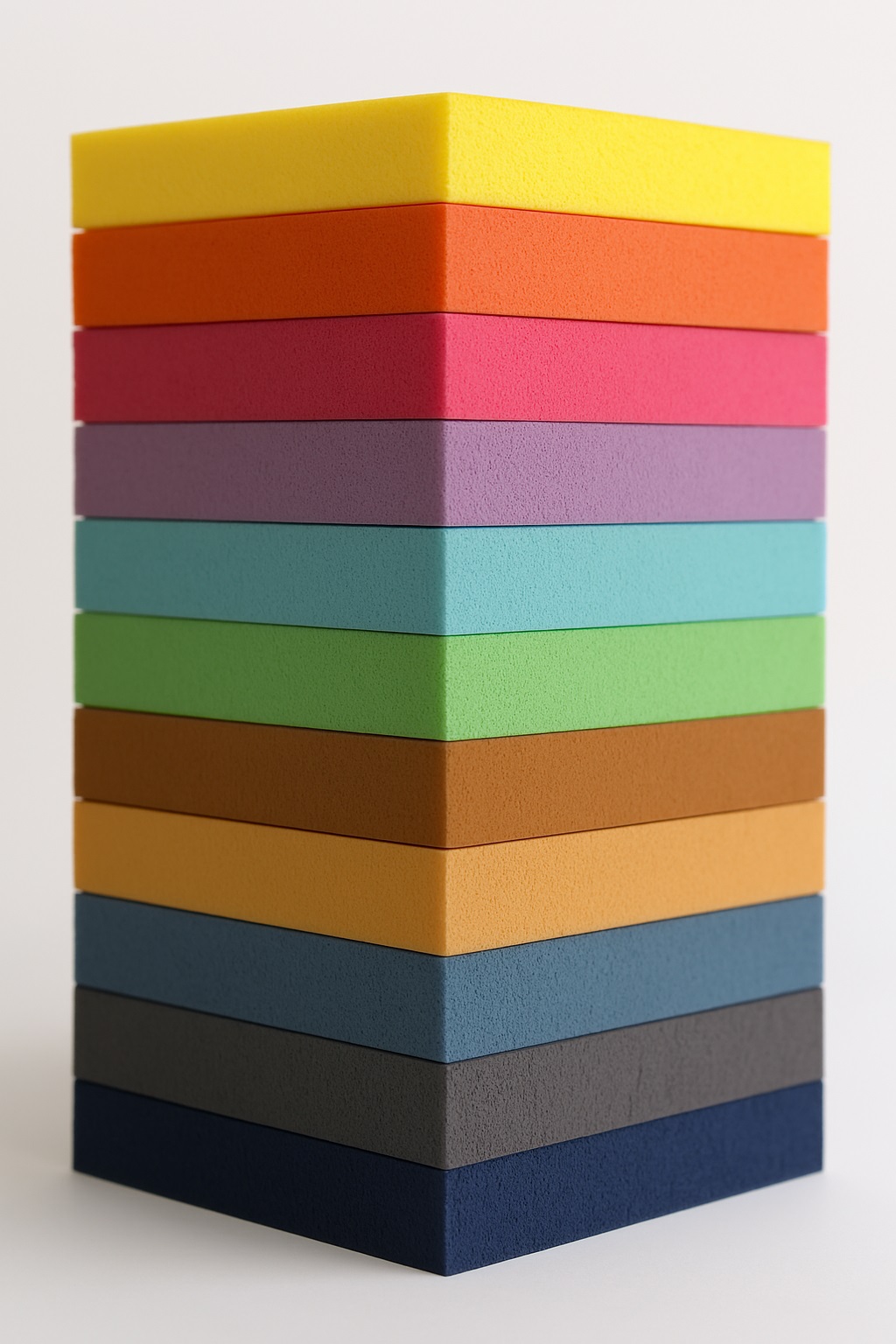Vibration Control Solutions
The name Nhuur is derived from the Arabic and Urdu word for “light” or “radiance” — a fitting reflection of our philosophy. Just as light brightens and clarifies a space, Nhuur is dedicated to bringing clarity and tranquility through sound.


Spring Isolator
Spring isolators are mechanical devices designed to isolate and absorb vibrations and shocks, especially from heavy mechanical equipment. They’re commonly used in HVAC systems, industrial machinery, and building vibration control systems.
Features and benefits
Material Composition
- Spring: Made from high-tensile steel, often powder-coated or galvanized for corrosion resistance.
- Housing/frame: Steel or aluminum casing; may include rubber elements for extra isolation or stability.
- Some versions include neoprene cups, rubber pads, or snubbers for damping and safety.
Vibration Isolation Performance
- Excellent for isolating low-frequency vibrations (3–6 Hz and up).
Maintenance and Durability
- Long service life, High-tensile steel, corrosion-protected Suitable for outdoor use.
- Maintenance-free, though periodic checks for alignment or sagging
Fire and Environmental Resistance
- Metal components are non-combustible.
Load Capacity
- Designed to support heavy loads:
- From 15 kg to several tons per isolator.
- Models are selected based on the total equipment weight and desired vibration reduction


MLV
Mass Loaded Vinyl (MLV) is a highly effective soundproofing material designed to block noise transmission by adding mass and density to walls, ceilings, and floors. Known for its flexibility and high STC (Sound Transmission Class) rating, MLV is widely used in both residential and commercial applications.
Features and benefits
Durability
- Resistant to moisture, chemicals, and wear, MLV offers long-term performance with minimal maintenance.
Non-Porous and Moisture-Resistant
- Resists water, mold, and mildew — ideal for damp areas like basements or utility rooms.
Fire-Resistant (Class A Rated)
- Meets ASTM E84 standards; suitable for commercial and residential use.
Excellent Soundproofing Performance
- Improves Sound Transmission Class (STC); can add 20–25 STC points when combined with drywall.
Thin Yet Effective
- Typically 1/8" to 1/4" thick; provides sound isolation without adding bulk
Flexible and Easy to Install
- Can be cut, bent, and shaped around pipes, studs, and irregular surfaces.

Flooring Underlays
Flooring underlay is a high-performance vibration control material designed to reduce both impact noise (footsteps, dropped objects) and vibration. It is installed beneath the finished flooring—such as hardwood, tile & screed concrete floor.
Made from rubber & recycled composites, acoustic underlay acts as a vibration absorber. It enhances privacy between floors, reduces sound transmission through structural elements, and improves walking comfort.
Features and benefits
Durability & Load Support
- Prevents Floor Damage: Absorbs pressure to extend the lifespan of flooring.
- Laminate & Engineered Wood: Reduces noise and adds cushioning.
- Hardwood: Provides slight flexibility to prevent cracking.
- Carpet: Enhances softness and extends carpet life.
- Load-Bearing Strength: Available in different densities to support heavy furniture and traffic.
Moisture & Water Resistance
- Prevents mold, mildew, and damage to flooring.
- Help block moisture transmission.
Thermal Insulation & Energy Efficiency
- Retains Heat: Helps maintain indoor temperature, improving energy efficiency.
- Cold Floor Protection: Especially beneficial in colder climates.
Cushioning & Comfort
- Shock Absorption: Reduces stress on joints and increases underfoot comfort.
Eco-Friendly & Sustainable
- Sustainable alternatives for green building projects.
- Ensures indoor air quality and safety.

Decoupling Pads
Decoupling pads are high-density isolation materials designed to reduce structure-borne vibration and minimize sound transmission between building elements. Typically made from rubber, polyurethane, or cork composites, these pads act as a resilient buffer between floors, walls, machinery, or building components to effectively break the direct sound path.
Features and benefits
Durability
- Resistant to wear, aging, moisture, and temperature fluctuations, making them suitable for long-term use in diverse environments.
Compression-Resistant
- Engineered to maintain elasticity and not compress over time, ensuring consistent performance.
High Load-Bearing Capacity
- Made from dense, durable rubber or elastomeric materials to support heavy loads without deformatio
Vibration & Sound Isolation
- Designed to decouple mechanical components (e.g., speakers, HVAC equipment, flooring) from the structure, reducing vibration transfer.
- Minimizes structure-borne sound transmission, improving overall acoustic performance in buildings and studios.
Easy Installation
- Typically available in precut sizes or rolls, they are easy to place under floors, walls, or equipment bases without requiring specialized tools.
Eco-Friendly
- made from recycled materials or low-emission components for green building compliance (LEED certification)
Frequently Asked Questions
What is acoustics design?
Acoustic design optimizes sound quality within a space, improving comfort, focus, and well-being by controlling noise and echoes.
Which spaces need acoustic solutions?
Offices, homes, hotels, restaurants, theatres, and more—all can benefit from tailored acoustic treatments to reduce noise and enhance sound quality.
How do I know if I need acoustics solutions?
If your space has noise distractions, echoes, or poor sound quality, you may need acoustics treatment to improve clarity and reduce noise.
What products do you offer?
We offer soundproofing panels, acoustic foam, noise barriers, baffles, and custom acoustic solutions for both residential and commercial spaces.
